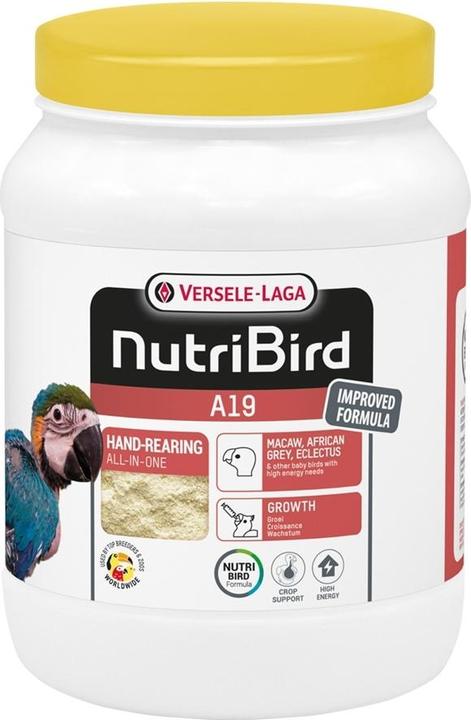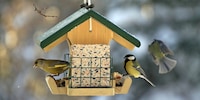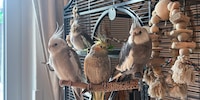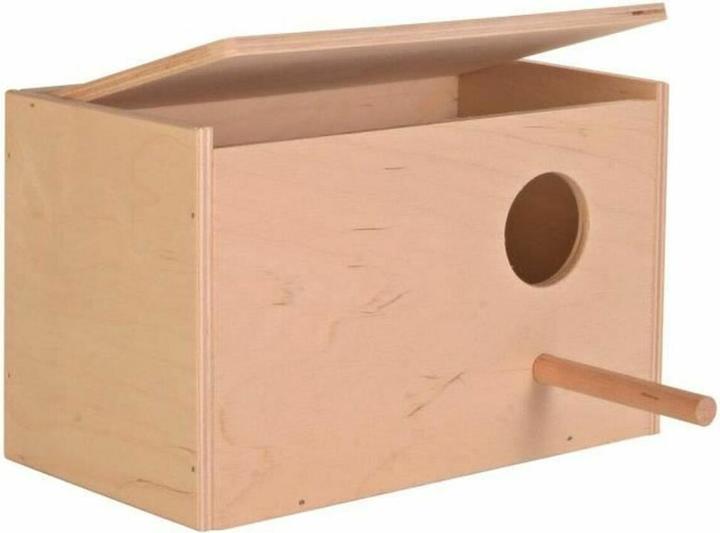

My cockatiels are in love! What now?
My two little ones have fallen in love. Cookie and Pebbles are a couple. Here are some things I have to consider before baby cockatiels arrive.
He bows to her and she tenderly strokes his head. There’s no mistaking it: my cockatiels Cookie and Pebbles love each other. The white cock and the yellow and grey spotty hen have been inseparable for a few weeks now. After knowing each other for just a few weeks, the two of them have paired up.
And YES, they also mate. Right in the middle of the living room. All Pebbles has to do is signal «I’m up for it» and Cookie climbs on top of her and off they go. As soon as Cookie has «finished», he announces this with a loud singing interlude. Cockatiel love – like any love – is a great thing. Anyone who has ever seen their pets all loved up knows how heart-warming it is to watch.
And yet, as a cockatiel mum, I’m now asking myself questions: what if Pebbles lays eggs? Do I seriously want chicks? And what happened to Rio, the third bird in the cockatiel flat share?
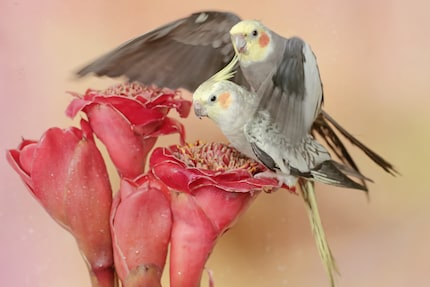
Source: Shutterstock
The thing with eggs
First things first, just because Pebbles and Cookie mate doesn’t necessarily mean she’ll lay eggs. There are cockatiel hens that never lay eggs despite having a permanent partner – and there are some that lay eggs even without a cock. It depends on their hormones. So far, Pebbles hasn’t produced an egg – and I’m doing my best to keep it that way.
For one, Pebbles and Cookie are just one year old. Although they’ve(quite obviously) reached sexual maturity, they’re actually still too young to become parents. As a rule of thumb, breeders recommend that especially the female should be two years old and fully grown, as her brood are quite demanding.
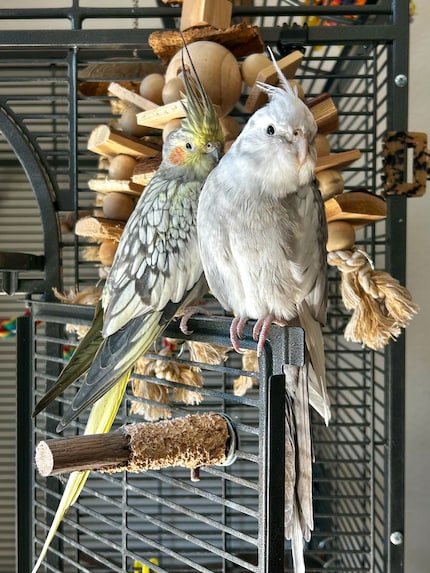
What’s more, cockatiels are cavity breeders. This means they need a nesting box or another protected corner to lay their eggs in. So as not to give Cookie and Pebbles any ideas, I don’t provide them with a box. Yet, many parakeet parents hang a nesting box in their cockatiels’ cage because they think it’s part of the basic equipment. Unfortunately, they don’t always do their feathered friends a favour, because the mere sight of a hole can make cockatiels broody. And once the eggs are there, the question arises: what do I do with them?

The thing with baby cockatiels
Let’s talk it through. Say you have a pair of parakeets and are okay with offspring. A female cockatiel lays four to six eggs per brood, which she then incubates for 18 to 21 days. Then the chicks hatch, blind and without feathers, completely helpless. They have to be fed by their parents and stay in the nest for about a month. If you want to peek into the nest during this time, be prepared for irritated and snappy birds. First-time cockatiel parents don’t always like it when you peek into their nursery. So stock up on some plasters beforehand.
Only after twelve weeks are young cockatiels reasonably independent and able to fly. And just because they can fly doesn’t mean that they’re already adults. Young cockatiels are extremely clumsy. They have a tendency to fly into everything, fall behind furniture and get tangled in curtains. Next you’ll be at the vet’s!
Now imagine that the parents don’t manage to raise them and you have to do the work. In other words, feed the chicks every two hours – even at night – with a special rearing mash. Wipe their beaks. Their butts. And their little feet. Keep them warm. Love them. Show them how to preen their own feathers later on. How to fly. The list goes on and on. It’s a full-time job. You’d better submit your annual leave now.
Until 2012, you needed a breeding licence if you wanted to breed parakeets in Germany. This was enshrined in the Animal Health Act and was intended to protect against the spread of psittacosis, a bacterial pneumonia in parrots. Now, there’s no longer any official supervision. And in Switzerland, breeding has always been permitted.
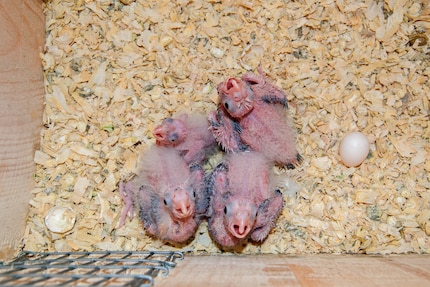
Source: Shutterstock
So from a purely legal point of view, there’s nothing wrong with «love chicks» – not even for Pebbles and Cookie. It’s more about whether I want the responsibility. Would you want chicks? But even if my little fluffs breed at some point and everything goes well, what do I do with the offspring? I can’t fit four to six more of them in my apartment. Not to mention the noise level. So I’d have to sell them... but do I have the heart to do that? I can’t bring myself to face this question yet.
What if Pebbles lays an egg anyway? After all, nature sometimes takes wild paths. Then I’d probably take it away from her. And without replacement. That sounds heartless, but the alternative – replacing the real eggs with plastic eggs – is no better. Because the hen will brood. And brood and brood. And nothing will happen. Quite sad, isn’t it?
The thing with three inhabitants
Let’s come back to the present and the question: what about Rio? After all, there are two cocks in my cockatiel flat share. When Pebbles moved in, I often heard: «What if Rio’s jealous because he wants the hen?» Spoiler: that’s not going to happen. Because Rio has zero romantic interest in Pebbles. For him, she’s more of an annoying big sister who steals his food. Of course, I already suspected that before I got Pebbles. Because I think Rio likes boys. He definitely looks at Cookie with hearts in his eyes...
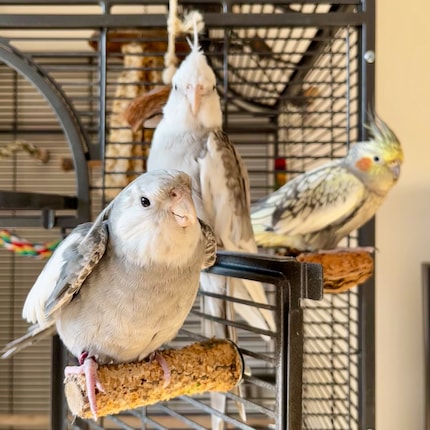
But things aren’t always as chill as in my cockatiel flat share. On Reddit and in animal forums, I’ve read plenty of stories about cocks fighting over a hen. And when two cockatiels go at each other, it can certainly get bloody. They even bite their opponent’s feet because they don’t have protective feathers there and it hurts. And there’s always plenty of feathers flying. Not to mention the fact it creates a bad atmosphere. Often the owners have no choice but to give one of the males away to restore peace and quiet.
So it’s a good thing Rio isn’t interested in girls (yet).
Would you let your birds have offspring? Let me know in the comments!
As a child, I was socialised with Mario Kart on SNES before ending up in journalism after graduating from high school. As a team leader at Galaxus, I'm responsible for news. I'm also a trekkie and an engineer.
Practical solutions for everyday problems with technology, household hacks and much more.
Show all